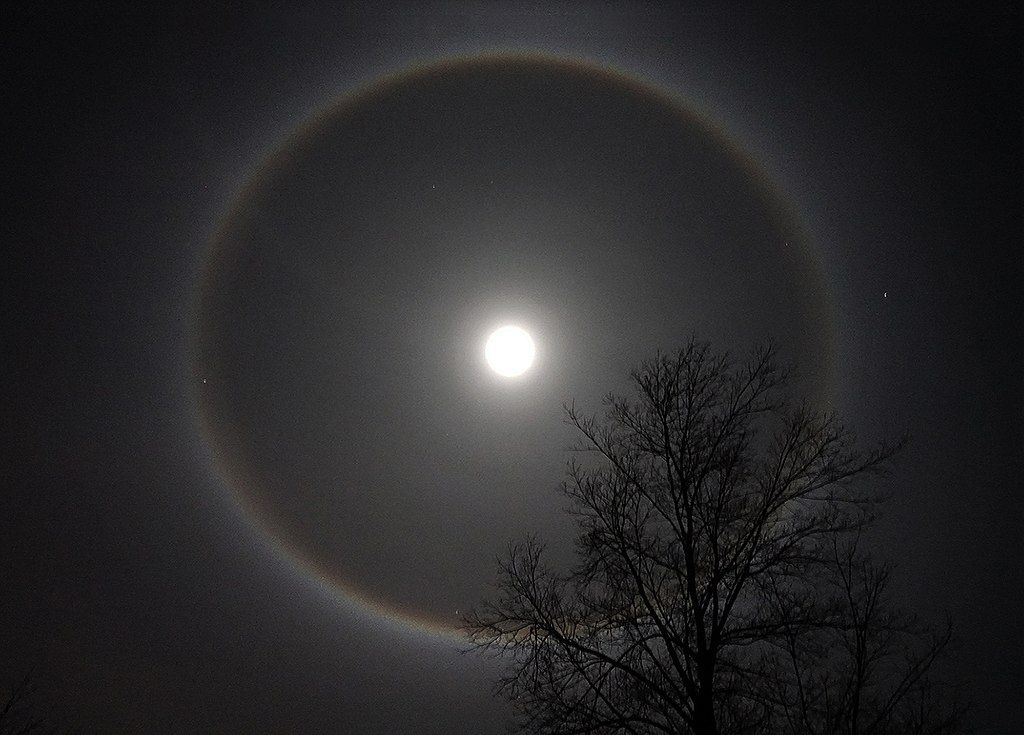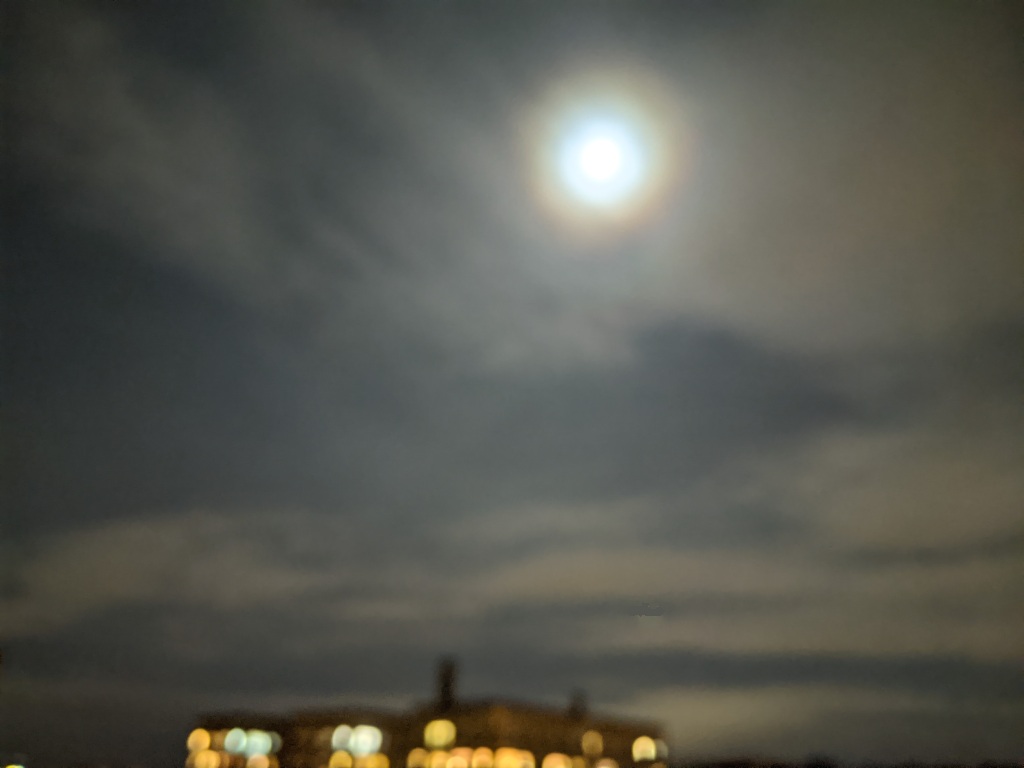
30 January 2021
In winter when the moon is full and the sky is almost clear with a thin layer of cirrus clouds you may see a halo around the moon. The ring has a radius of 22o so it’s called a 22o halo, a moon ring, or a winter halo.
The conditions for a moon ring are relatively rare in Pittsburgh: a full moon + a clear sky + thin cirrus clouds whose ice crystals refract and reflect the moonlight. Seeing the halo is a matter of perspective based on where you stand and which ice crystals refract/reflect for you.
That’s why, like rainbows, halos around the sun – or moon – are personal. Everyone sees their own particular halo, made by their own particular ice crystals, which are different from the ice crystals making the halo of the person standing next to you.
— EarthSky.org “What makes a Halo Around the Moon”
On Wednesday night, 27 January, the nearly-full Wolf Moon rose before sunset hidden by Pittsburgh’s overcast sky. By 8pm the clouds were breaking up and made an iridescent halo around the moon. It was not a true 22o halo but it cast enough light to make shadows. All I have to show for it is this very blurry photo.

The next morning at 4:15am the sky was absolutely clear and the moon was shining brightly without a ring. I was disappointed because the clear sky was wasted on us while Pittsburgh slept. Three hours later the sun rose in an overcast sky.
Last night was the same — a nearly full moon and an absolutely clear sky. No moon ring.
The Wolf Moon is waning and winter will too. The next full moon on 27 February is our last chance at a Winter halo. The full moon after that — 28 March — will be in the Spring.
(photo at top from Wikimedia Commons; click on the caption to see the original. blurry photo by Kate St. John)
Got an e-mail saying the Aviary met, and surpassed, its donor match. Hooray!
Yay!